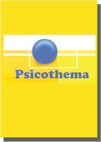Abstract
Background: Nurses' practice involves working in complex organizational settings and facing multiple stressors over time that can lead to burnout. This study aimed to identify predictors of burnout among nurses working in hospitals. Method: A sample of 1,157 participants from four hospitals in the city of Porto (Portugal) was investigated (78% women, mean age = 34.7 years) using socio-demographic and work variable questionnaires, the Maslach Burnout Inventory (MBI-HSS), Personal Views Survey (PVS), Job Satisfaction Scale (S20/23), and Survey Work-Home Interaction - NijmeGen (SWING). Results: Multiple linear hierarchical regression analyses (stepwise method) showed that gender, age, years of experience at work, working in more than one institution, being involved in management positions, job satisfaction, hardiness, and experience of work-home and home-work interaction, seem to be predictors of burnout among nurses. Conclusions: This study adds support to the interactionist approach to burnout. In other words, it is crucial to investigate the relationship between several factors such as socio-demographic, work, and personality factors to understand burnout. Additionally, these findings should be taken into account when designing burnout prevention programs for nurses working in hospitals.Downloads
Download data is not yet available.
